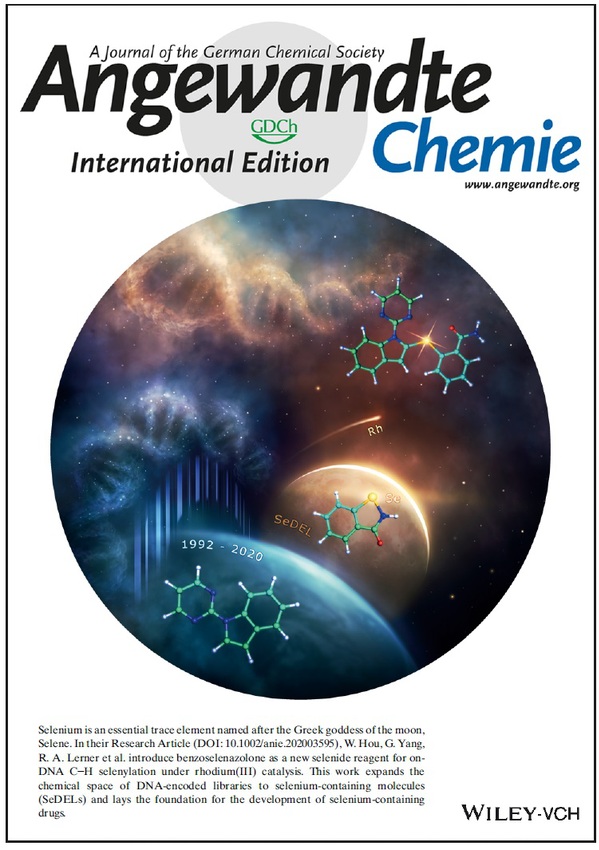Recently, Angewandte Chemie International Edition published a collaborative study led by Professors Richard A. Lerner and Yang Guang from Shanghai Institute for Advanced Immunochemical Studies (SIAIS) of ShanghaiTech University, entitled “A Chemistry for Incorporation of Selenium into DNA-Encoded Libraries”. This paper has been highlighted as Very Important Paper (Top 5%) and selected as Cover Feature.


DNA-encoded library (DEL) technology, which combines synthesis, amplification, and sequencing of DNA with DNA-compatible organic reactions, has emerged as a powerful technology in small-molecule drug discovery. It enables screening of ultra-large compound libraries in an unprecedented high-throughput and cost-efficient manner. To date, several drug candidates derived from their corresponding DEL hits have progressed to clinical trials. Despite these successes, the great potential of DEL technology in drug discovery has yet been fully realized. One of the most fundamental challenges is the synthesis of high-quality libraries with complex structures and spatial diversities, which depends on new, and versatile DNA-compatible chemical reactions.
Selenium is an essential trace element, an integral component of at least 25 seleno-proteins participating in a wide range of physiological processes. It is especially important as a component of antioxidants, and in aspects of the reproductive system, the innate immune response, and the metabolism and function of thyroid hormones. Selenium deficiency has been associated with an increased incidence of multiple diseases, such as placental retention, metritis, mastitis, spontaneous abortion, reduced fertility, and increased susceptibility to infections.
Despite the importance of selenium compounds, up to now there is no reported DNA- compatible reaction to incorporate selenium into DNA-encoded library. With the aim to expand the chemical space of DNA-encoded library, recently, researchers from the groups of Profs. Richard A. Lerner and Yang Guang at SIAIS have developed a mild on-DNA rhodium catalyzed C-H selenylation reaction using benzoselenazolone as selenium reagent. Significantly, this reaction has excellent functional group tolerance, and is fast, scalable, redox-neutral, air and water insensitive, and can be carried out in the absence of any additives. This work shows great potential in facilitating rapid construction of selenium-containing DNA-encoded chemical libraries (SeDELs), and lays the foundation for the development of selenium-containing drugs.
Up to now, this research team has focused on the construction of diversity-based next generation DELs, and has obtained a series of progresses in the development of new DNA-compatible reactions, construction of natural product DNA-encoded library (nDEL), and the screening of some challenging targets. The progresses include: 1) the development of DNA-compatible Suzuki, Sonogashira and Buchwald cross-coupling reactions using ArOFs as electrophiles (Adv. Sci. 2019), 2) functional independently labelling of complex natural products into DNA-encoded libraries (Angew. Chem. Int. Ed. 2019), 3) on-DNA synthesis of druglike fragments using iEDDA reaction of tetrazines (Chem. Commun. 2020), and the selection of small molecular activator for the insulin receptor using nDEL (iScience 2020).
Research Assistant Professor Dr. Xu Hongtao and graduate student Gu Yuang from SIAIS are the co-first authors of this article. Professors Richard A. Lerner and Yang Guang from SIAIS and Professor Hou Wei from Zhejiang University of Technology are the corresponding authors. Julie Liu from School of Creativity and Art of ShanghaiTech designed the visionary Cover Feature.
Read the article: https://doi.org/10.1002/anie.202003595

